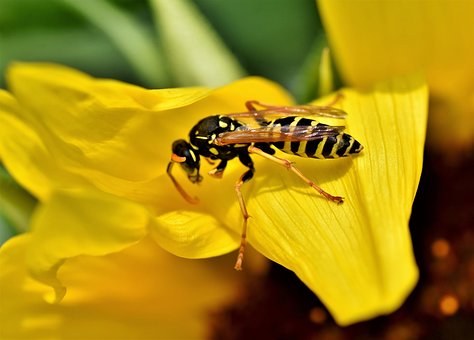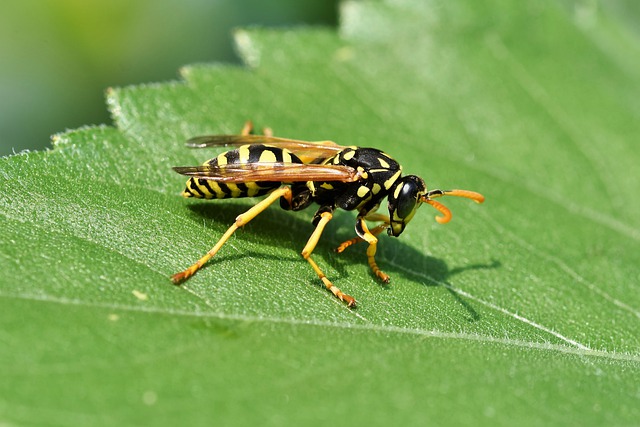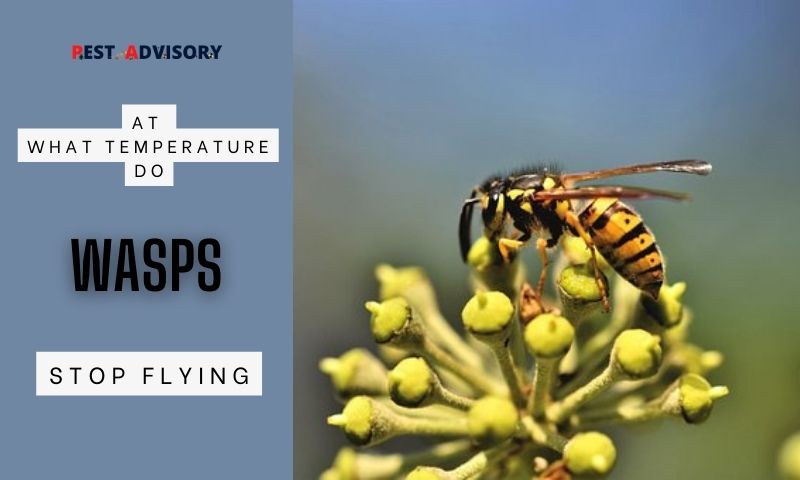As the summer draws to an end, you’ll see wasps busily flying and foraging for food as winter fast approaches.
As temperatures drop, so does the population of wasps recedes. Now, at what temperature do these wasps stop flying?
Even we, humans, find it hard to cope with the colder temperature; what more for these nuisance pests?
Important Note: If you're tired of pests and want a reliable solution, then you should definitely consider seeking help from a professional pest control company. DIY solutions can be effective, but if you're dealing with a significant pest infestation, you don't want to rely solely on DIY methods. Pest control companies typically don't charge huge fees. You can fill out this form to receive free quotes from the top local pest control companies, and compare the quotes and see for yourself. Then, finally, your pest problems will be eliminated for good.
In this article, we will let you in on the behavioral changes that happen to wasps as temperatures become colder.
These behavioral changes respond to the needs and survival of the whole colony.
Read on to learn what temperature wasps stop flying during winter.
Metabolism Of Wasps
The metabolism of wasps can vary depending on their activity level and the temperature they are exposed to.
Vespine wasps, such as Polistes biglumis, have a high mass-specific resting metabolic rate, meaning they require a lot of energy even when they are not active.
In fact, their resting metabolism increases steeply with ambient temperature.
When wasps are active, their metabolism increases even more, as they require more energy for movement and hunting.
The standard or resting metabolic rate and the metabolism of active wasps were measured in the temperature range to which they are exposed in studies on vespine wasps.
The respiratory metabolism of overwintering paper wasps was also studied to better understand the energetic demands of different climates.
It was found that the metabolic rate-temperature relationships for wasps from different climates varied, indicating that wasps in colder climates may have higher metabolic rates to maintain body temperature.

What Temperature Do Wasps Stop Flying?
Wasps will become lethargic and unable to fly when the temperature drops below 50-53°F (10-12°C), although they can technically still fly for short periods in slightly lower temperatures.
Once the temperature drops toward freezing, wasps find it difficult to fly at all, and many of them will begin to die
What Happens to Wasps When the Weather Turns Cold?
Wasp undergoes behavioral changes when there is a change in their environment.
That could be high or low temperature, the presence of prey or predator, and human interruption could also cause it.
Such behavioral changes respond to their needs and biological instinct to survive.
Now, in fall, wasps will highly sense that winter’s cold and freezing periods are coming. They are preparing to find food and protect their queen and their colony.
As winter approaches, wasps are even more aggressive and protective of their queen.
As the queen is placed on the highest part of the hierarchy of wasps, worker wasps will do anything to provide for her even if the weather gets colder.
Also, if they sense that something is threatening their colony, wasps will indeed attack and bite repeatedly! Just like us, wasps will find it hard to cope with the winter season.
As the temperature drops, the wasp’s population recedes. Unlike in the summer months, wasps are vigorous food hunters and scavengers.
But, when winter comes, they’ll save and store their energy to forage for food.
As it becomes too difficult to move and fly in the colder temperature, some wasps die because of starvation while others freeze to death.
The winter season will have a noticeable effect on the energy and metabolism of wasps.
As it turns out, most of them are not the fittest to survive in the colder and freezing weather.

Frequently Asked Questions
At what temperature do hornets die?
Hornets are ectothermic and become lethargic below 50-53°F. European hornets can withstand colder temps. Once below freezing, most die off. Inseminated females hibernate until spring.
At what time of the day are wasps most active?
Wasps are generally most active during the warmth of the day, from morning until evening. They get less active at night and dusk. Workers are out and about during the day and are more likely to see you as a potential threat.
Can wasps fly in the rain?
Wasps can fly in light rain but will usually seek shelter during heavy rains. The rain can make it difficult for them to fly and hunt for prey, so they may wait until the rain passes before becoming active again.
Does paper wasp die in the winter?
Most worker paper wasps die in the early fall, and the remaining colony members will not survive the winter. However, inseminated female paper wasps may hibernate in sheltered areas until spring when they can begin building new colonies.
Final Thoughts
There is no denying that wasps are nuisance pests! As the summer draws to an end, you will likely find them hovering near your picnic table as unwanted guests.
Now that can be a total bother! But, when winter comes, these pests are pushed to the edge of their survival.
As the temperature drops, so does their population recedes at a faster rate.
When temperatures drop below 50°F, wasps find it hard to fly or even fail to fly at all because of the freezing weather.
As such, many of them are left frozen or starved to death.
Now, you might want to protect your house when winter comes, as these pests will find shelter when temperatures begin to drop.
Thanks for reading!

